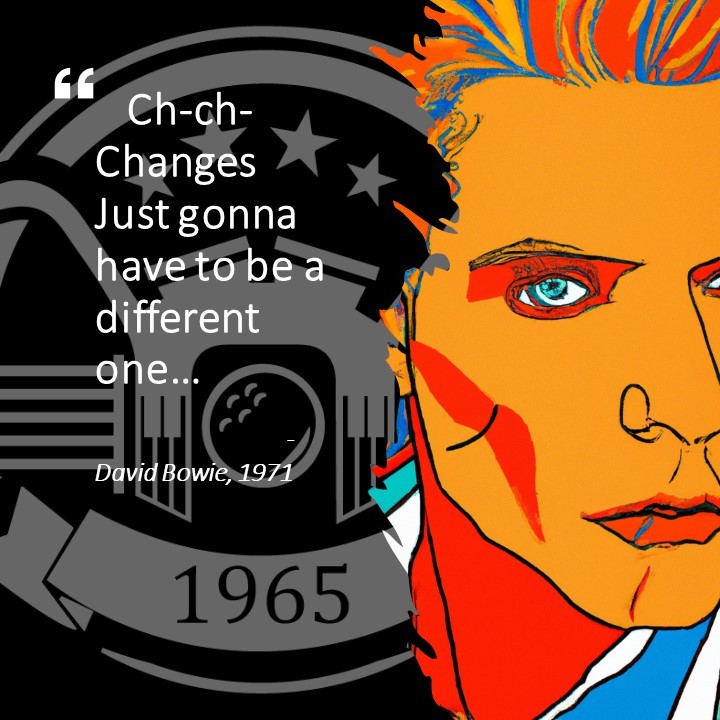
Most professional leagues revise rules on a frequent basis, typically every year. Major League Baseball actually made a few key changes in 2023 that have had a big impact and have been the topic of several conversations and media publications:
- Timer restrictions for batters and pitchers, thus helping to reduce game lengths by almost 30 minutes.
- A limit on infield defensive shifts, contributing to an increase in runs and batting average per game
- Increase in base size, leading to higher success of stolen bases in the season so far
Some argue this is helping a very traditional and conservative league to attract younger audiences by having more action and shorter lengths (something that FIFA should probably copy to avoid the increase of game length through the introduction of VAR a few years ago).
Football has also changed through the years. In order to be more attractive and to protect the players, the NFL has made changes such as moving the goal posts from the goal to the end line, adding the two-point conversion, implementing personal fouls, allowing unlimited substitutions, implementing instant replays and face mask penalties. Actually, the league makes several changes every year, 9 of them in 2023.
One close to mine, is its adoption of the 3-point rule, implemented in 1979 (I remember, I am that old!). While tested in college games,,, it was the American Basketball League, the first one to introduce it in 1961. George Saperstein, commissioner of that league, said that it was meant to add excitement to the game and distinguish it from the bigger NBA.
Formula 1 changed 10 rules after a year of a major reset in 2022. But, although most of the time the rule changes favor speed, many of them actually reduce it to favor driver’s safety. In most cases, making the season more spectacular.
One more, in 2022 a new golf league was launched competing with the PGA: LIV Golf. Major differences being team as well as individual competitions, shorter rounds, shotgun starts and guaranteed monetary awards for all players, not only those that make the cut.
According to an article by Scott Barbour published by The Conversation, professional leagues have 4 main reasons to change the rules:
- Reducing the risk of injuries (refer to change in racing car designs, helmets in football, etc.)
- Making the games easier to officiate
- Enhancing the spectacle (making long games shorter, enabling higher scoring, etc.)
- Creating more space for advertising (money, oh money!)
Changes, changes, changes… all for the better. Usually.

Now, how about work environment? Do work rules change every year? Do they provide safer, more productive conditions? Are they frequent enough or too frequent?
Here are some global trends in work environment:
- The COVID-19 epidemic has pushed the adoption of remote and flexible work. Many organizations have been converting to remote work arrangements, allowing employees to work from home or other locations. Increased flexibility and work-life balance are made possible by this trend.
- Digitalization and automation: Businesses are using technology more and more to automate processes and increase efficiency. Artificial intelligence, machine learning, and robotic process automation are being used to improve workflows and remove repetitive labor.
- Freelancing and the gig economy: More people are choosing freelance work and short-term contracts as the gig economy continues to expand. Platforms and online markets make it easier for organizations looking for particular expertise to connect with freelancers.
- Focus on employee well-being: Businesses have begun creating programs to support mental and physical health as they realize how important employee well-being is. To foster healthier work environments, employee support programs, wellness benefits, and flexible scheduling are being implemented.
- Diversity and inclusion: The importance of fostering a diverse and inclusive workplace is rising. Companies aggressively work to develop an inclusive culture that embraces workers from many origins because they understand the value of multiple ideas.
- Collaboration and agility in the workplace: Traditional hierarchical structures are being replaced by more open, flexible workspaces. Cross-functional teams, open office designs, and shared workspaces all encourage communication and innovation.
- Lifelong learning and skill improvement are essential due to the rapid advancements in technology. To respond to changing job needs, businesses are engaging in staff training programs for both technical and soft skills.
- Corporate social responsibility and sustainability: Environmental sustainability and social responsibility have emerged as crucial factors for corporations. Businesses are adopting sustainable practices, minimizing their carbon footprints, and matching their values to those of the broader community and the environment.
“The future of work is really about people deciding to live and work in the way that they want”. Stacy Brown-Philpot – former CEO of TaskRabbit
So, what else should change? How do we make our work more spectacular and entertaining, safe and productive, just like in sports?
Here you can watch a short video from CBS`s Today 3rd Hour with Dan Roth, editor in-chief at LinkedIn, about work rule changes.
The seventh episode of the seventh season (1995) of the American animated television program The Simpsons is titled “King-Size Homer.” In the episode, Homer resolves to lose weight until he weighs 300 pounds (136 kg) in order to declare himself disabled and work from home because he hates the new fitness program at the nuclear plant. You can watch a summary here: